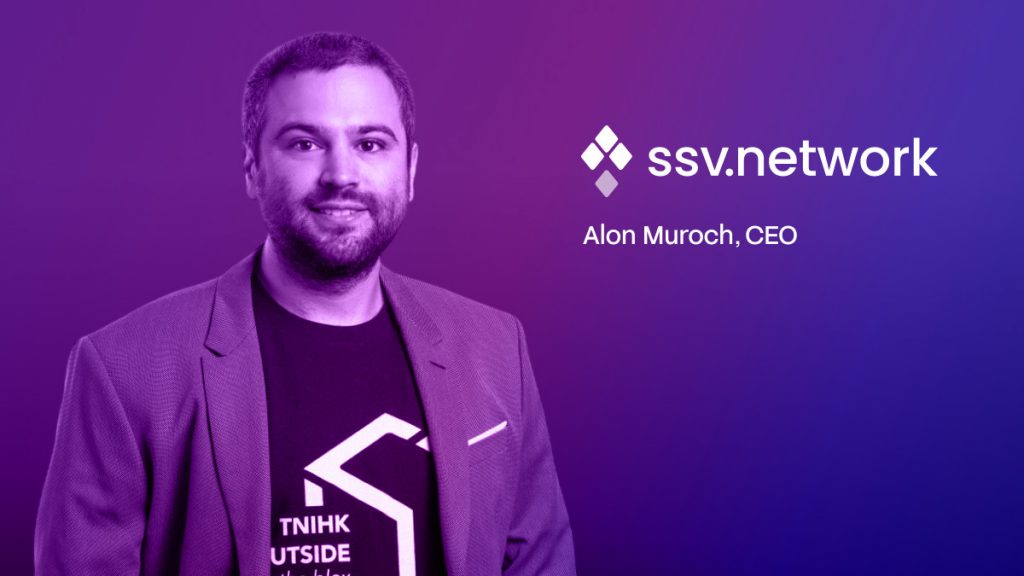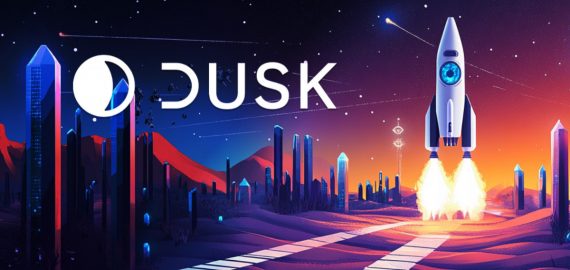The Technology Powering 1.7M ETH Staked on SSV. Why It’s a Game-Changer for Decentralized Networks


In Brief
Alon Muroch discusses innovations like distributed validator technology, Alan Fork mainnet, independent operators, and Ethereum’s future.

Did you know that SSV Labs currently manages 1.7 million ETH at stake, representing 4.5% of the entire Ethereum ecosystem? In this interview, we explore the innovations that make this possible, including distributed validator technology (DVT), which fundamentally enhances Ethereum’s security and decentralization.
Joining us is Alon Muroch, CEO of SSV Network, who shares insights from his extensive experience in blockchain development and the journey of SSV Labs in building resilient and decentralized staking solutions. We discuss recent milestones like the mainnet of Alan Fork, the role of independent operators, and the future of staking, offering a detailed look at the technologies and strategies shaping Ethereum’s path.
Can you start by sharing your journey to Web3?
I’ve been in this space for quite a while, starting back in 2012. As a developer, I initially contributed code to Ethereum and Bitcoin, even developing my own wallet early on. About seven years ago, I co-founded SSV Labs. We’ve worked on various projects, but for the past four years, our focus has been on staking, particularly distributed validators. That’s the core of what we’re doing and aligns with the vision we have for the future.
How does SSV’s distributed validator technology enhance security and decentralization for Ethereum staking compared to traditional validator setups?
Before SSV launched, running a validator required setting up a server, either hosted by yourself or a cloud service, which was a single point of failure. If the server failed, so did the validator. SSV’s Distributed Validator Technology (DVT) changes this by distributing a validator’s operations across a group or cluster of entities. These entities coordinate using a consensus protocol and threshold signatures.
This approach creates a distributed network where even if one entity fails, is hacked, or is compromised; the validator continues functioning because it operates as a group. It eliminates the single point of failure. We introduced this to Mainnet about a year ago, and since then, we’ve seen significant growth. SSV now manages 1.7 million ETH at stake, which accounts for roughly 4.5% of the entire Ethereum ecosystem.
Recently, SSV underwent the Alan Fork mainnet. Was it successful, and what are the main metrics?
Yes, the Alan Fork, completed just 48 hours ago, was a major milestone. It focused on optimizing resource consumption for SSV nodes. We re-engineered the SSV protocol, achieving an 80-90% reduction in CPU, memory, and networking requirements. The fork was a resounding success. Currently, performance metrics on platforms like Rated Network show SSV at the top, confirming the effectiveness of these changes.
What milestones do you plan to achieve post-Alan Fork?
The primary goal of the Alan Fork was resource optimization, and we successfully met all our targets. Beyond that, we’re now focused on broader goals for the network, including expanding functionalities and improving overall performance. While the fork itself is a completed chapter, it sets the stage for future advancements.
What are the most significant risks associated with centralized staking solutions? How does SSV address them?
Centralized staking introduces systemic risks to Ethereum. If large validator operators are compromised, whether by a developer error, an attack, or even government intervention, it could destabilize the network. SSV addresses this by allowing validators to operate as groups through DVT, eliminating reliance on a single entity.
Additionally, DVT fosters collaboration among different types of operators—large and small—without requiring trust between them. Initiatives like EtherFi and Lido leverage DVT to integrate solo and smaller operators, which increases Ethereum’s resilience by involving a diverse range of participants in validation.
What role do independent operators play in this ecosystem? How can users choose the right ones?
Independent operators are crucial for decentralization. They operate autonomously and aren’t overly reliant on others. When choosing operators, users should prioritize services that promote decentralization. For example, look for staking pools that incorporate a diverse mix of solo and small operators. This diversity reduces risk and enhances Ethereum’s resilience.
SSV is open-source. How does this benefit the community?
SSV has been a public good from the beginning. As an open-source project, anyone can use or adapt it. It’s also managed and funded by a DAO, which ensures community-driven development and decision-making. Recently, the DAO funded the development of an additional client for SSV, embracing Ethereum’s multi-client philosophy. This approach not only aligns with Ethereum’s core values but also ensures SSV remains community-owned and controlled.
Can you discuss the collaboration with Sigma Prime on a new validator client? How does it enhance staking resilience?
Having a second validator client developed by Sigma Prime adds multiple layers of security and reliability. First, it introduces redundancy, reducing the impact of bugs or issues in the primary client. Second, it allows for cross-verification, where two expert teams collaborate to refine technical decisions. Lastly, multiple clients ensure that if one fails, the network remains operational. Sigma Prime’s involvement significantly bolsters the robustness of the SSV network.
How do you ensure privacy for your users?
SSV maintains the same level of privacy as Ethereum. It’s fully decentralized and doesn’t require KYC. Users interact with it as they would with Ethereum, ensuring anonymity and security.
What are the benefits of a mesh network structure for scaling staking applications on SSV?
The mesh network is key to SSV’s design, making it highly developer-friendly. It enables seamless discoverability and coordination between operators, ensuring validators can be deployed within seconds without manual intervention.
The mesh structure also improves resilience against attacks like DDoS. Nodes communicate in a distributed manner, so if one operator is targeted, others can relay messages and maintain the network’s functionality. This architecture, inspired by Bitcoin’s proven design, ensures robustness and scalability.
How do you see the staking market evolving in the next few years?
The staking market is evolving rapidly. Validators are now offering additional services to earn extra rewards, such as shared security and pre-confirmation sequencing. This trend aligns with SSV’s mission to empower validators to do more than just secure Ethereum.
We envision a future where SSV validators form a vibrant marketplace, offering diverse services while earning significantly higher rewards. This could attract more solo and small operators, transforming staking into a viable source of income for many. Such developments will enhance Ethereum’s decentralization and robustness.
Do partnerships play a significant role in your network?
Partnerships are essential for us. For example, we’ve recently introduced a dedicated SSV-Lido module to enhance operator functionality. Collaborations like these promote DVT adoption while advancing decentralization and robustness in the Ethereum ecosystem.
Are there any emerging trends in the Ethereum ecosystem that excite you?
Absolutely. One major trend is “based applications,” which leverage Ethereum validators for security and liveness. Another exciting development is the rise of Layer 2 solutions and synchronous composability. Ethereum’s potential to serve as the internet’s settlement layer, with everything else built on top, is incredibly compelling. We’re also seeing growth in traditional finance (TradFi) applications moving on-chain, driven by regulatory changes and the introduction of ETFs.
Disclaimer
In line with the Trust Project guidelines, please note that the information provided on this page is not intended to be and should not be interpreted as legal, tax, investment, financial, or any other form of advice. It is important to only invest what you can afford to lose and to seek independent financial advice if you have any doubts. For further information, we suggest referring to the terms and conditions as well as the help and support pages provided by the issuer or advertiser. MetaversePost is committed to accurate, unbiased reporting, but market conditions are subject to change without notice.
About The Author
Victoria is a writer on a variety of technology topics including Web3.0, AI and cryptocurrencies. Her extensive experience allows her to write insightful articles for the wider audience.
More articles

Victoria is a writer on a variety of technology topics including Web3.0, AI and cryptocurrencies. Her extensive experience allows her to write insightful articles for the wider audience.

















































